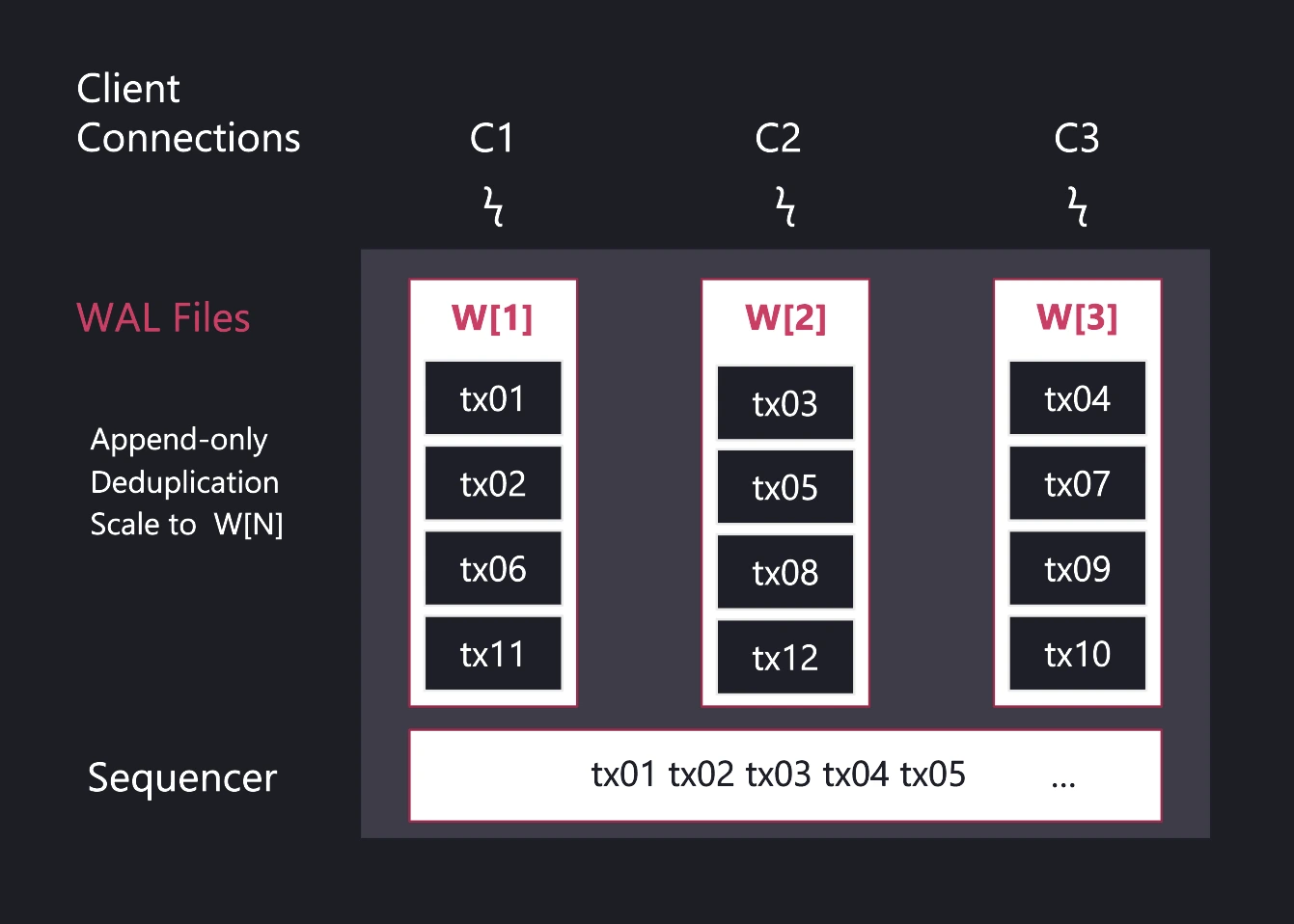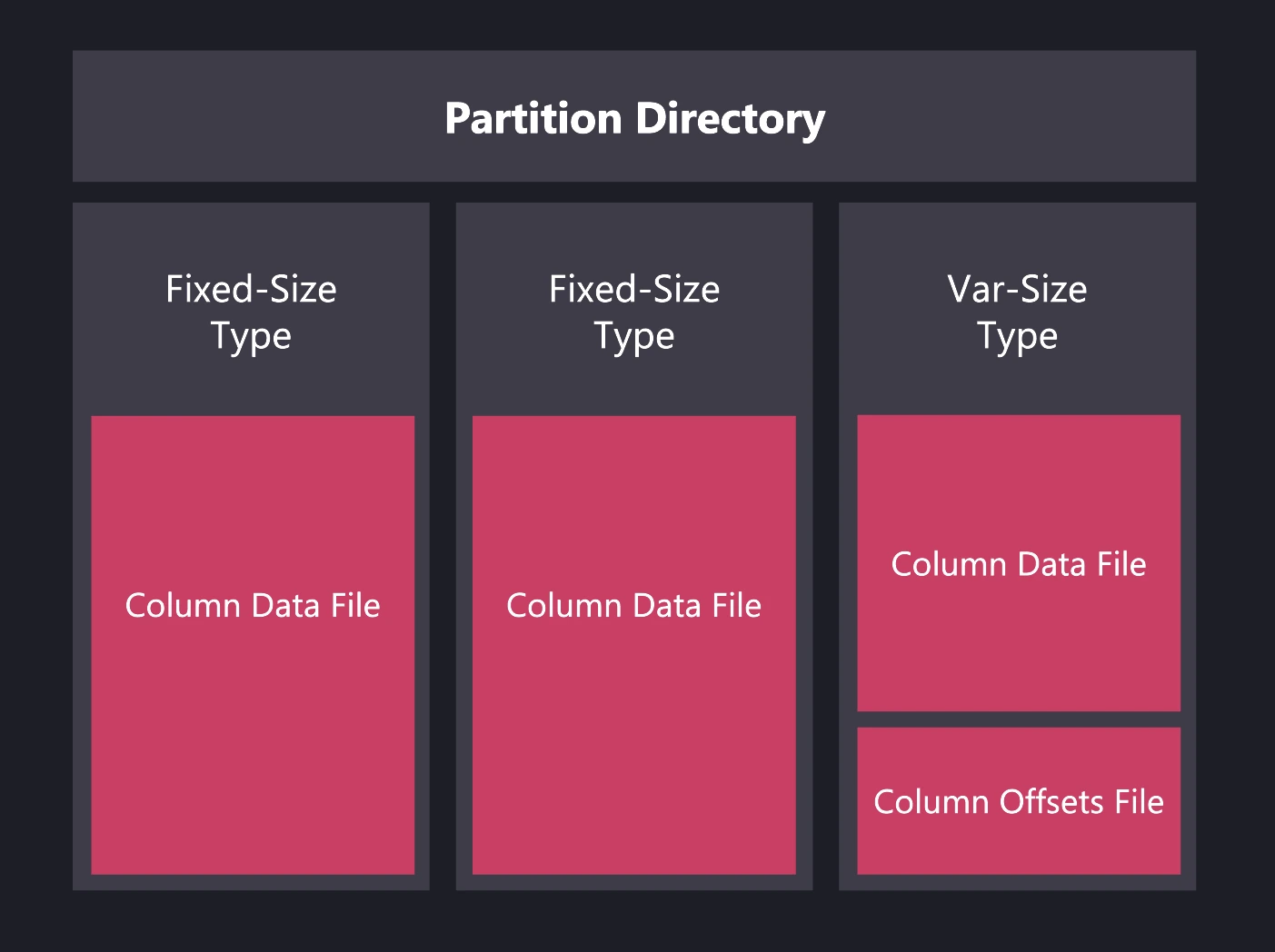Storage Engine
Storage engine
The QuestDB Storage Engine implements a row-based write path for maximum ingestion throughput and a column-based read path for maximum query performance. Table storage can be configured to use the QuestDB native binary format or to combine the QuestDB binary format for recent data with Parquet for older partitions. We refer to this model as a three-tier storage model.
Tier One: Parallel Write-Ahead Log
-
Two-phase writes: All changes to data are recorded in a Write-Ahead Log (WAL) before they are written to the database files. This means that in case of a system crash or power failure, the database can recover to a consistent state by replaying the log entries.
-
Commit and write separation: By decoupling the transaction commit from the disk write process, a WAL improves the performance of write-intensive workloads, as it allows sequential disk writes, which are generally faster than random ones.
-
Per-table WAL: WAL files are separated per table, and also per active connection, allowing for concurrent data ingestion, modifications, and schema changes without locking the entire table.
-
WAL consistency: QuestDB implements a component called "Sequencer," which ensures that data appears consistent to all readers, even during ongoing write operations.

Tier Two: QuestDB Binary Table Storage
Changes in the parallel WAL files are stored in columnar binary format by the TableWriter. The TableWriter also handles and resolves out-of-order data writes and enables deduplication. Column files use an append model.
The active (most recent) partition for each table is always stored in this storage tier for minimum query latency and to optimize writes in the event of out-of-order data or when updating sampling intervals in materialized views.
Tier Three: Parquet, Locally or in an Object Store
Older partitions (any partition other than the most recent one) can be converted to Parquet for both interoperability and compression ratio.
Partitions in Parquet format remain fully available for queries. Users don't need to know whether a partition is in QuestDB binary format or Parquet format. All the data types available in QuestDB can be converted to Parquet.
When using QuestDB Enterprise, tables can be configured to convert to Parquet automatically and to send the Parquet files to object storage (Amazon S3, Microsoft Blob Storage, Google Cloud Storage, NFS...). This can help reduce the cost of storing historical data while keeping it fully available for queries.
Tier One: Hot ingest (WAL), durable by default
Incoming data is appended to the write-ahead log (WAL) with ultra-low latency. Writes are made durable before any processing, preserving order and surviving failures without data loss. The WAL is asynchronously shipped to object storage, so new replicas can bootstrap quickly and read the same history.
Tier Two: Real-time SQL on live data
Data is time-ordered and de-duplicated into QuestDB's native, time-partitioned columnar format and becomes immediately queryable. Power real-time analysis with vectorized, multi-core execution, streaming materialized views, and time-series SQL (e.g., ASOF JOIN, SAMPLE BY). The query planner spans tiers seamlessly.
Tier Three: Cold storage, open and queryable
Older data is automatically tiered to object storage in Apache Parquet. Query it in-place through QuestDB or use any tool that reads Parquet. This delivers predictable costs, interoperability with AI/ML tooling, and zero lock-in.
Data Deduplication
When enabled, data deduplication works on all the data inserted into the table and replaces matching rows with the new versions. Only new rows that do not match existing data will be inserted.
Generally, if the data has mostly unique timestamps across all the rows, the performance impact of deduplication is low. Conversely, the most demanding data pattern occurs when there are many rows with the same timestamp that need to be deduplicated on additional columns.
Column-oriented storage
- Data layout:
The system stores each table as separate files per column. Fixed-size data types use one file
per column, while variable-size data types (such as
VARCHARorSTRING) use two files per column.

-
CPU optimization: Columnar storage improves CPU use during vectorized operations, which speeds up aggregations and computations.
-
Compression: Uniform data types allow efficient compression that reduces disk space and speeds up reads when ZFS compression is enabled. Parquet files generated by QuestDB use native compression.
Next Steps
- Back to the QuestDB Architecture overview
- QuestDB GitHub Repository
- QuestDB Documentation